Original Kit:
The Monkees-Mobile
Made By:
AMT/Ertl (kit #30259)
Scale:
1/25

eBayPartner Affiliate Link
Other 1960s TV Models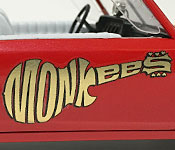
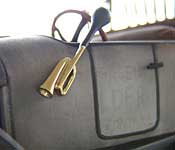
Other Music Models
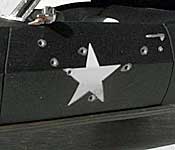
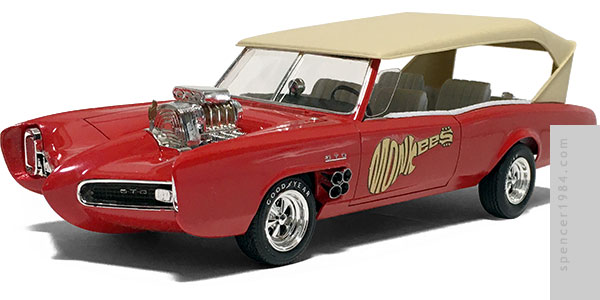


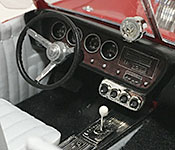
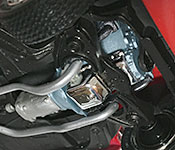
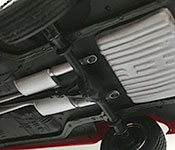
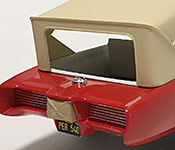
The Monkeemobile was another reissue of a late 1960s tooling, much like the Munsters Koach, so I went into this expecting about that level of quality. And while it was no Tamiya kit, I was pleasantly surprised by how nicely this went together.
The chassis was an old school metal axle setup, though with a good amount of detail and a nice selection of separate parts including a two-piece rear axle and separate exhaust pipes. I painted the pan flat black, the pipes and fuel tank silver, and the axle, frame rails, suspension, and inner wheels semi-gloss black. The tires were pretty decent hollow Goodyears, but all four were the same size. So I pulled two larger tires from my parts box for the rear and painted the lettering on all four with a white gel pen.
The engine was only slightly modified to correct the shape of the starter, then it was painted Pontiac engine blue with a steel transmission and the stock chrome details. The supercharger got some gold detailing, and the scoop was filled, sanded, and rechromed with Bare Metal Foil to eliminate the assembly seams. I added a belt from my parts box, since the kit engine only went as far forward as the main bearing.
Inside, I started with a coat of flat white and some black carpeting made from craft suede. I was roughly aiming for the original look of the car, when it had a white interior and light tan top, but I deviated when it came to the dashboard: instead of the black and brown combination it originally had, I went with solid black. Not only did I prefer this look, it helped the wood insert stand out better. The steering wheel was painted a matching black, and represented the worst flash in the kit with the frill around the base of the spokes. I replaced the shift lever with a custom piece made from a straight pin, though this was less because of my opinion of the kit-supplied piece and more because it went missing at some point during the build. There was one oddity in the instructions worth mentioning: whoever was in charge of drawing arrows at MPC decided that the best place to mount the auxiliary gauge cluster was on the brake pedal. So I ignored this and placed it under the dash to the right of the steering column, as it was on the 1:1.
Finally, the body was prepped, assembled, and painted. I started with a black wash for the door lines, hood lines, and cowl vents. Then it got a light coat of Tamiya white primer, three coats of TS-8 Italian Red, and one coat of TS-85 Light Mica Red. This gave it a nice bright gloss finish with a subtle metallic effect. The trim around the windshield and on the taillights was done with BMF, and the side scripts were a combination of paint and foil. A fellow builder provided the door logos, which were not only shaped more accurately but printed in an excellent metallic gold. The top was painted Model Master's Modern Desert Sand, which was the lightest brown in my paint rack. Tamiya's TS-46 Light Sand was a runner-up, and was used for the parachute bag. Like the shift lever, one of my wing windows went missing at some point during the last 20 years. I used the remaining one as a template to cut out two new windows from clear sheet stock.
Putting together all the subassemblies was straightforward enough with positive locators between the chassis and interior, and between the interior and body. Unfortunately, using these made the rear axle sit too far forward and my bigger rear tires actually rubbed on the fender openings. So I popped the axle loose and reset it with the wheels properly centered. It was a fairly simple alteration: two small bits of flat stock between the axle and chassis so everything had a good surface for glue, and a cocktail straw over the driveshaft to get the proper length.
Even with this last-minute surgery, the overall kit was a pleasant surprise. I was expecting a softer casting with much more flash, but considering the age of the tooling and the era this version was released it was pretty darn solid. Not perfect, mind you: aside from the axle, the fit of the grilles to the body was very finicky, and had I been smarter I would have done more test fitting and added some extra filler to eliminate the gaps under the headlights and at the center of the car. Its relatively few re-releases over the years have probably kept it in good shape, and I wouldn't be surprised to see this make another appearance.